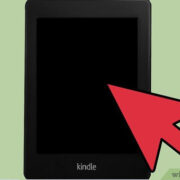In our digital age, sharing memories and moments through photographs has become second nature. Often we find ourselves wanting to send a bunch of these photos to friends, family, or colleagues. However, it’s not always as simple as picking a photo and hitting ‘send’—especially when there are multiple images involved. This can lead to frustration and confusion if you’re not familiar with the process.

Using Email Attachments
Attaching multiple photos directly to an email is one of the most straightforward methods for sharing images.
Detailed Steps:
- Open your preferred email service on your computer or device.
- Compose a new email by clicking ‘New Email’ or a similar prompt.
- Enter the email address of the recipient(s).
- Click on the ‘Attach’ button, often represented by a paperclip icon.
- Browse your files and select the photos you wish to send; you can usually select multiple files by holding the Ctrl key (Command on Mac) and clicking on each file.
- Once selected, click ‘Open’ to attach the files to your email.
- Add any message you wish to send with your photos.
- Before sending, ensure the total file size doesn’t exceed the limit set by your email provider.
- Click ‘Send.’
Summary:
The benefit of using email attachments is its simplicity, as most users are familiar with this function. However, email providers often have size limits for attachments which can be a downside if you are sharing a large number of high-resolution images.
Cloud Services
Using cloud services like Google Drive, Dropbox, or OneDrive allows you to share a large quantity of photos without overloading an email.
Detailed Steps:
- Choose a cloud service and create an account if you don’t already have one.
- Upload your photos to a new folder in the cloud service.
- Once uploaded, select the folder or images, then find and click the ‘share’ option.
- Adjust the sharing settings according to your preference (anyone with the link, specific people, etc.).
- Get the shareable link if you select the ‘anyone with the link’ option.
- Compose your email and paste the sharing link into the body of the email.
- Send the email to your intended recipients.
Summary:
The major advantage of cloud services is bypassing attachment size limits, enabling you to share large numbers of photos or high-resolution images. However, the recipient will need internet access to view or download the photos, which might be a limitation in some cases.
Compressing Images
If you don’t want to use cloud services, you can compress your images into a ZIP file to reduce their size for email.
Detailed Steps:
- Select all the photos you want to email.
- Right-click on the selection and choose ‘Send to’ and then ‘Compressed (zipped) folder’ for Windows, or simply ‘Compress Items’ if you’re using a Mac.
- A new ZIP file will be created in the same location as the original files.
- Attach this ZIP file to your email by following the earlier steps for attaching files.
- Send the email to your recipient once attached.
Summary:
Compressing photos into a ZIP file makes the file size more manageable for email and is straightforward to do. However, the quality of the images might slightly degrade, and the recipient will need to know how to unzip the file to view the photos.
Resizing Images
Before sending, you can resize images to make them more suitable for email sharing.
Detailed Steps:
- Open the photos in an image editor or use a batch resizing tool.
- Select a lower resolution or smaller dimensions that will reduce the file size.
- Save the resized images with a new name to keep the original files intact.
- Attach and send the resized images through email.
Summary:
The primary advantage of resizing is dispatching images that are faster to upload and download due to their smaller size. The downside is that resizing can result in lower-quality images.
File Transfer Services
File transfer services such as WeTransfer allow you to send large files via email without using cloud storage.
Detailed Steps:
- Visit the website of a file transfer service like WeTransfer.
- Choose the free transfer option, which typically allows for up to 2GB at once.
- Upload your photos as instructed on the site.
- Enter your email address and the recipient’s email address.
- Include an optional message if you like.
- Send the transfer link, which the service will email to your recipient.
Summary:
File transfer services are convenient for one-time sends and don’t require the sender or recipient to have an account or any special software. However, files sent this way are often only available for a limited time, and there’s usually a file-size limit.
Social Media Platforms
For a more casual approach, you can share photos via social media platforms like Facebook or Instagram.
Detailed Steps:
- Log in to your preferred social media platform.
- Create a new post or message.
- Upload the photos you wish to share.
- Add captions or tags if desired.
- Post publicly or send privately depending on your preference.
Summary:
Social media sharing is quick and easy, with no concerns about file sizes. Nevertheless, it lacks the privacy and security of other methods and is less professional for business communications.
Email Services With Auto-Resize
Some email clients automatically resize photos to make them easier to send.
Detailed Steps:
- Open your email client that has an auto-resize feature, like Apple Mail.
- Compose a new message and attach your photos as usual.
- Upon sending, the email client may prompt you to resize the images for easier sending.
- Choose the recommended size and send the email.
Summary:
Automatic resizing through an email client is user-friendly and helps ensure your photos are appropriately sized for email. However, you have less control over the final image quality.
Using Photo-Specific Apps or Services
Apps like Google Photos or Flickr are designed for photo sharing and give greater control over how photos are sent and received.
Detailed Steps:
- Download and install a photo-specific app or navigate to its website.
- Upload your photos to the app.
- Select the photos within the app and look for a sharing option.
- Choose to share via link or email depending on the app’s features.
- If the app provides a link, paste it into an email and send it to your recipient.
Summary:
These services are optimized for photo sharing and often allow for better organization and higher-quality images. The downside is that both sender and receiver may need an account with the service.
Multiple Emails
If other methods are not viable, you can split your photos into several emails.
Detailed Steps:
- Divide your photos into separate batches, each small enough to fit within your email client’s size limits.
- Compose an email and attach the first batch of photos.
- Add a note in the subject or body that more emails will follow.
- Send the first email and repeat the process for the remaining batches.
Summary:
This method does not require any additional tools or services. However, it can be time-consuming and increases the risk of the recipient missing or overlooking some of the emails.
Use Messaging Apps
Modern messaging apps like WhatsApp or Telegram allow sending of multiple photos easily.
Detailed Steps:
- Open your chosen messaging app and select the contact you want to share photos with.
- Access the attachment option (usually indicated by a paperclip or ‘+’), then select the ‘Gallery’ or ‘Photos’ option.
- Select all the photos you want to share and send them.
Summary:
Messaging apps are quick and user-friendly, suitable for sharing with individuals who are already part of your contact list. However, these apps may compress photos, resulting in quality loss, and they are not ideal for formal or professional exchanges.
In conclusion, sharing multiple photos via email can be accomplished in a number of ways, each with its own set of benefits and potential disadvantages. Whether you choose direct email attachments, cloud services, or other methods like messaging apps and file transfer services, the key is to choose the solution that best suits your needs and the comfort level of your recipient. Remember that photo quality, file size, and the ease of access for your recipient are all important factors to consider when deciding on the best method for sharing your images.
FAQs:
1. What is the maximum size for email attachments?
The maximum size for email attachments varies by email provider, but it generally ranges from 10MB to 25MB.
2. How can I share photos if they exceed the maximum email attachment size?
You can use cloud services, file transfer services, or compress your photos into a smaller file to share them when they exceed the attachment size.
3. Do recipients need to have the same app or service to view the photos I share?
For most cloud services and file transfer services, the recipient does not need to have the same service to view the photos. They will need to have the same messaging app if you choose to share photos through messaging apps.









